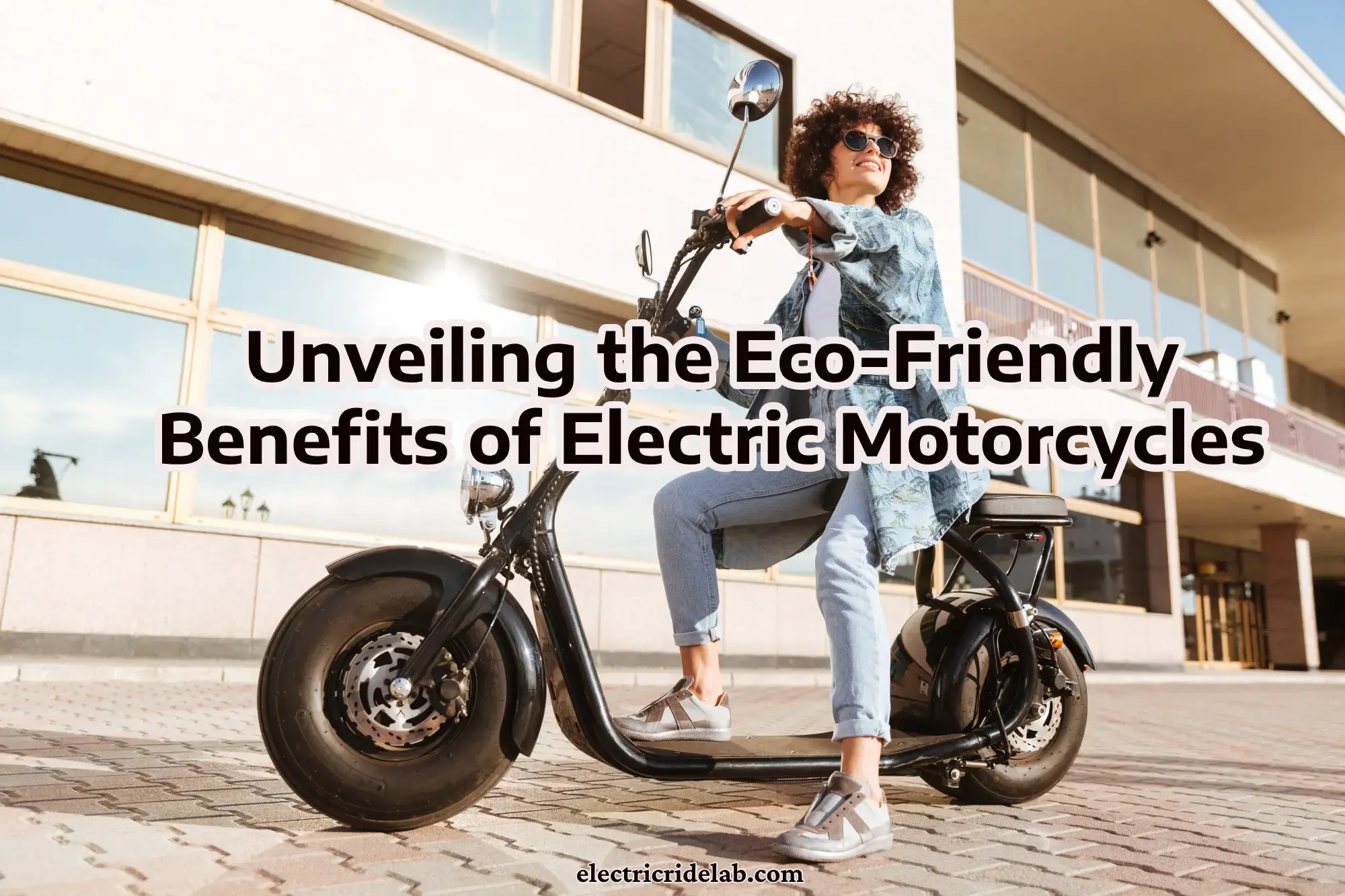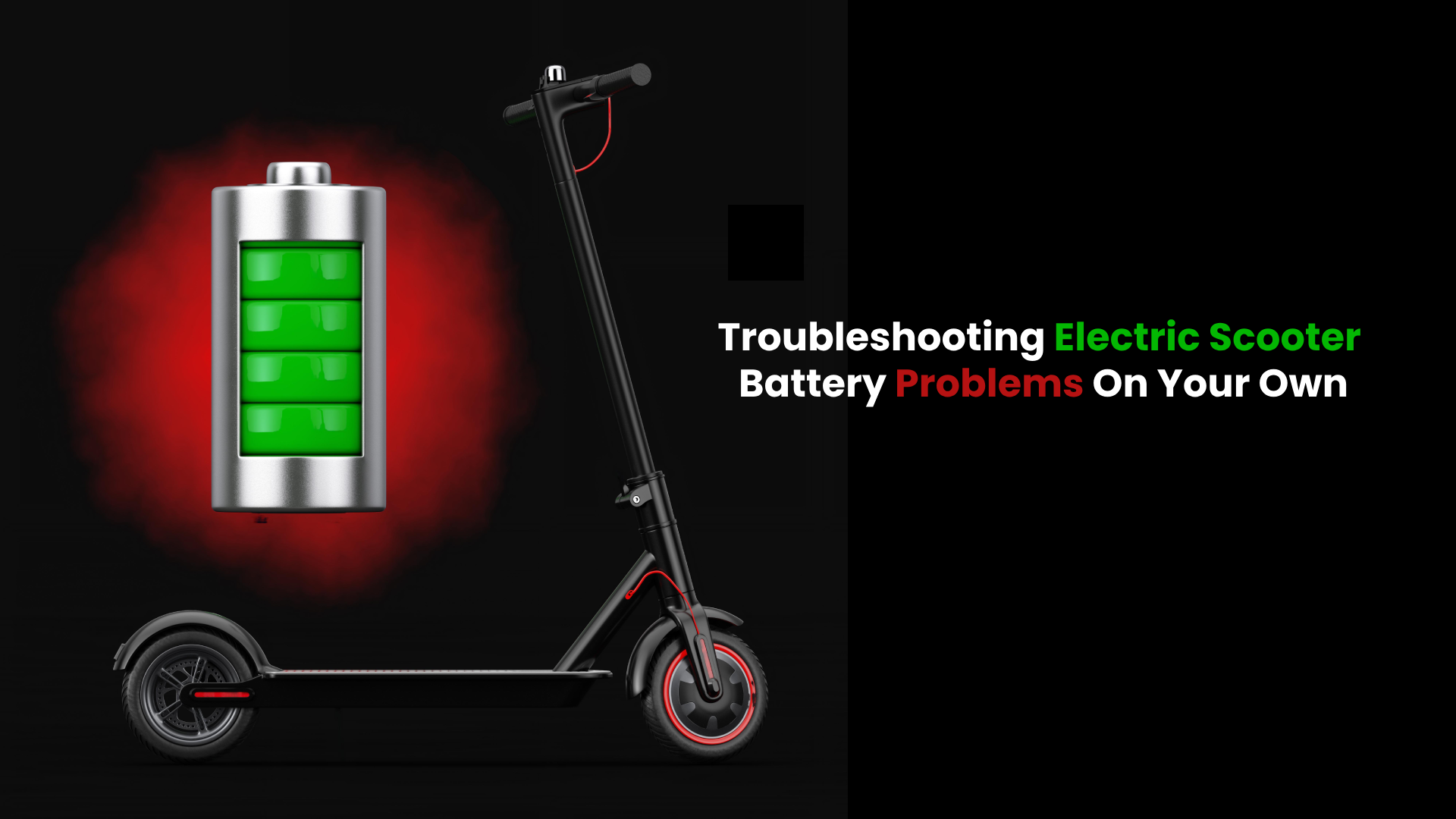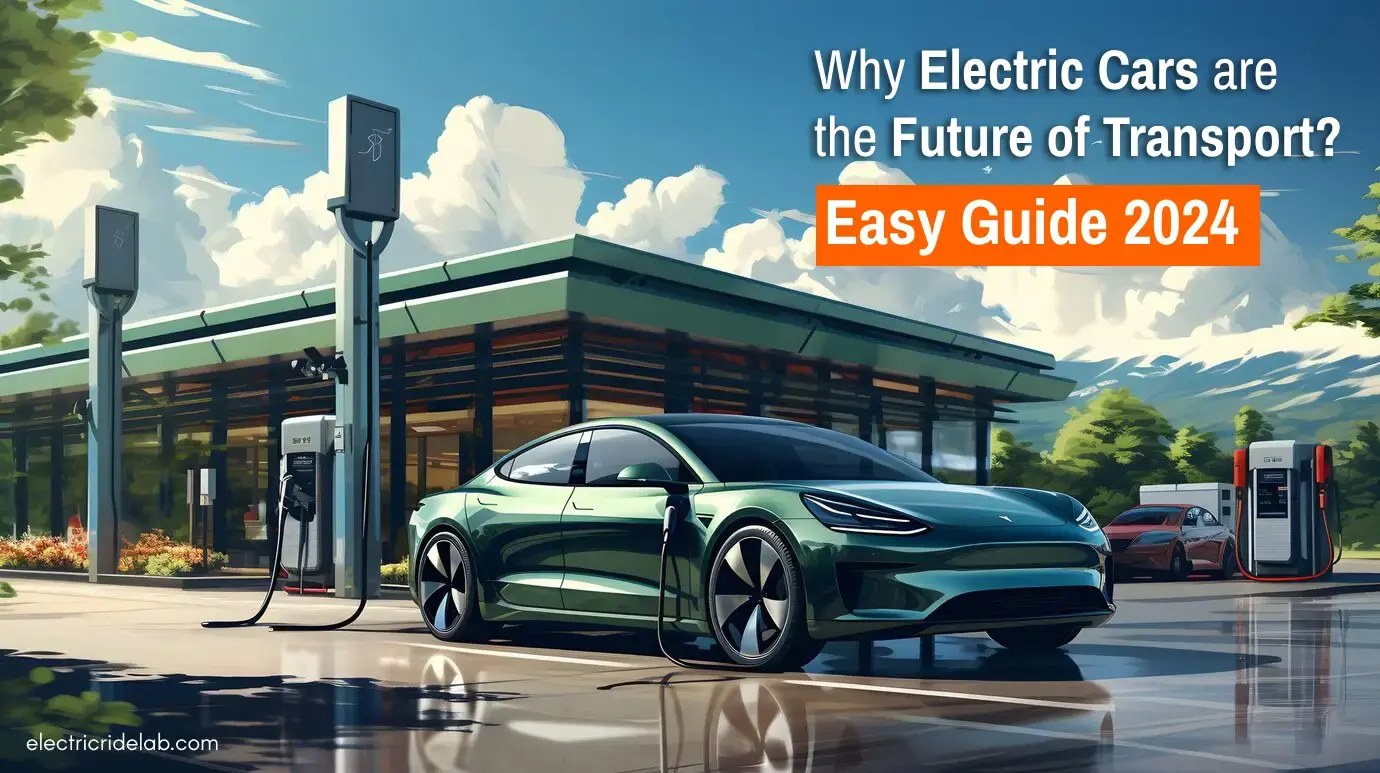Traditionally, cycling enthusiasts would have an e-bike for every season. For instance, during the summer, cyclists would have a lightweight mudguard-less summer bike for sunny days.
On the other hand, the hardy and reliable e-bikes would be the go-to option for the rugged winter or wet season.
Fast forward, however, many of the e-bikes brands have attempted to blend the attributes of the single-season e-bikes into a best all weather electric bikes
While the attempt is by no means finely tuned, there’re electric bikes that come close to being the all perfect best all weather electric bikes
Just to be clear: There are differences between electric bikes designed for riding in wet conditions and all-weather e-bikes. The former places more emphasis on maximizing traction in loose conditions while the latter combines the prevalent qualities of several e-bike types into one.
The list below is a compilation of some of the best all-season electric bikes currently available on the market. Check them out.
Editor’s 1st Choice
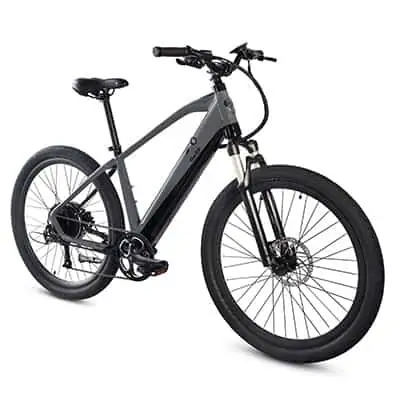
Ride1Up Lmt’d
Overall Rating:
- Riders Weight Limit | 275 lbs (125 kg)
- Motor | 750 W Geared Hub Motor
- Range | 30-50 Miles
- Battery | 48V14ah Reention Eel Pro Samsung Cells, Smart BMS
- Speed | 20 mph
- Waterproof Rating | IP65
Learn More!
Editor’s 2nd Choice
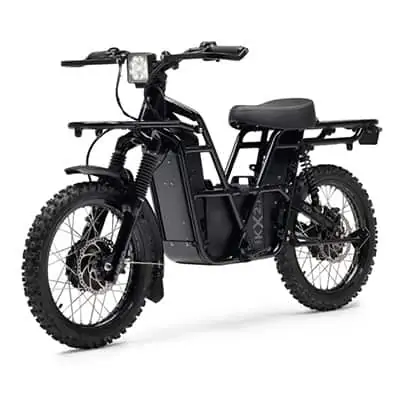
UBCO 2×2 Work Bike
Overall Rating:
- Riders Weight Limit | 330 lbs (150 kg)
- Motor | 1kW Flux2 Motor
- Range | 70 Miles
- Battery | 2.1 kWh or 3.1 kWh Battery Pack
- Speed | 30 mph
- Waterproof Rating | IP66
Learn More!
Editor’s 3rd Choice
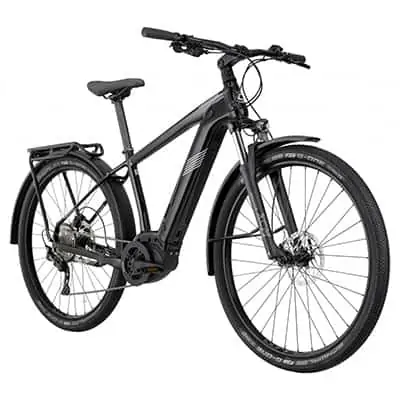
Cannondale Tesoro Neo X 3
Overall Rating:
- Riders Weight Limit | 200 lbs (91 kg)
- Motor | 250W Bosch Performance Line
- Range | 60 Miles
- Battery | 36V 13.4Ah Detachable Lithium-ion Battery
- Speed | 20 mph
- Waterproof Rating | IPX4
Learn More!
What Ebike Is Waterproof
In general, most electric bikes on the market today are water resistance, to a certain degree, resistant to water ingress. E-bikes, like every other electronic device, don’t work well when exposed to water.
It causes their components to wear down faster and also increases the risk of their engines getting shot or, even worse, catching on fire. E-bike manufacturers counter this by encasing sensitive components within water-resistant materials so that they lock water molecules to surface areas on the ebike.
The degree of protection these materials provide against intrusion from water and solid objects is usually rated using a standardized system called the Ingress Protection rating (or IP rating). Although e-bikes aren’t exactly designed to be impervious to water, their enclosures can be effective against the effects of immersion in water for long periods.
Best All weather Electric Bikes
1) Ride1Up Lmt’d
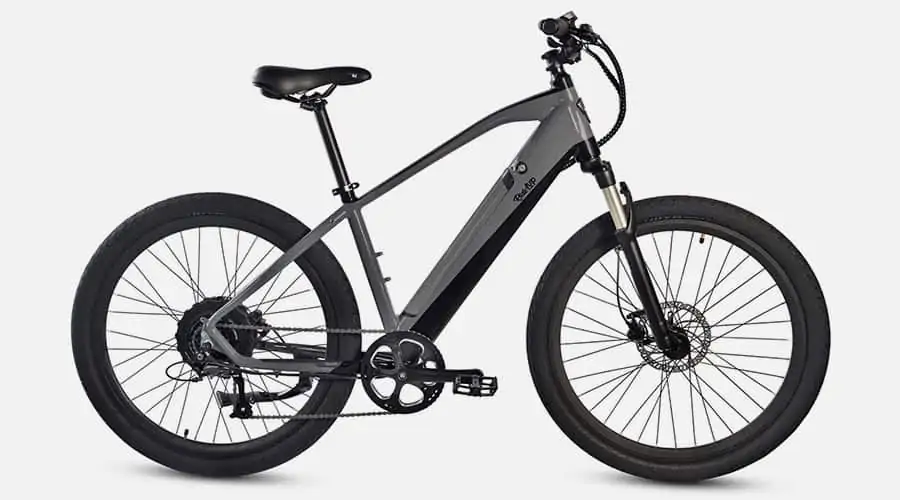
This affordable electric bike is unlike any other in its class. It comes equipped with air forks (which offer more adjustability than usual coil-spring forks), hydraulic disc brakes, an 8-speed transmission, and a torque sensor.
The Ride1Up Lmt’d (like all other Ride1Up models) has a waterproof rating of IP65. This means its electrical components are protected against ingress from dust particles of all sizes and water from pressurized nozzles.
An electric bike with IP65 rating should meet the basic requirements for riding in wet conditions. They can handle road sprays, water splashes; hell, you can even wash them with water pumps (as long as the pressure doesn’t exceed 4.4 PSI).
However, they are not designed to be immersed in water. So, avoid puddles that’ll completely engulf electric components on your e-bike.
Pros
- The Ride1Up Lmt’d’s motor can actually put out up to 1000W of power at peak performance. Most of the “high-powered” electric bikes available on the market today are rated for 500W of continuous power.
Not the Lmt’d. This beast can generate 750 Watts of continuous power and up to 1000 Watts of peak power. - You can return the bike to Ride1Up after 30 days of its purchase for a full refund. Anyone who purchases the Lmt’d and finds out that they’re not satisfied with the product can return to the manufacturer within 30 days and get a full refund.
Cons
- It’s a bit pricier than most e-bikes in its range. But, hey, you can’t complain, it’s fitted with components you’d most likely only find on high-end e-bikes.
- The bike doesn’t come with any accessories. Ride1Up does not include lights (front and rear) and fenders to Lmt’d orders.

Main Features:
- Riders Weight Limit | 275 lbs (125 kg)
- Motor | 750 W Geared Hub Motor
- Range | 30-50 Miles
- Battery | 48V14ah Reention Eel Pro Samsung Cells, Smart BMS
- Speed | 20 mph
- Waterproof Ratings | IP65
2) UBCO 2×2 Work Bike
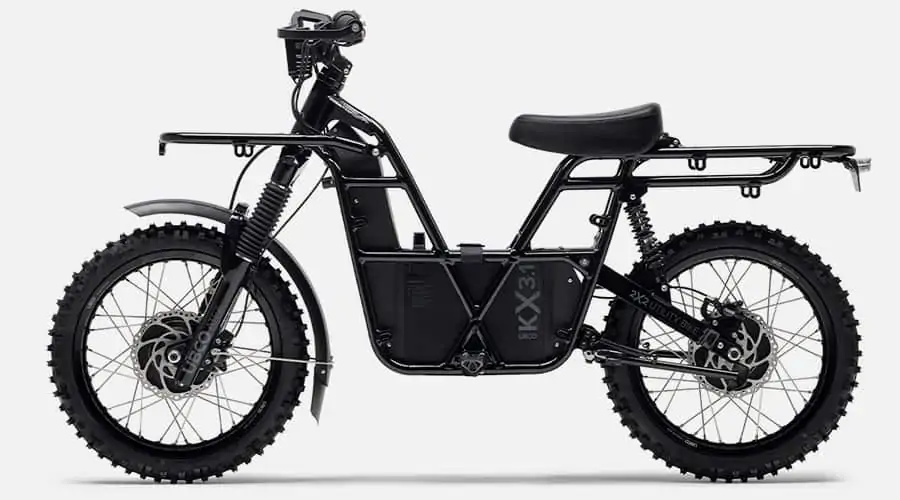
This electric bike easily outclasses every other bicycle on this list. The Ubco 2X2 WRK is a high-perfomance utility e-bike equipped with dual 1000W (1KW) motors.
It is an all-terrain bicycle designed for heavy-duty purposes. Real-world tests suggest the Ubco 2X2 can cover up to 70 miles on a full charge (that’s almost 2X the range on most mid-range e-bikes) and reach top speeds of 30 miles an hour.
According to the manufacturer, the 2X2’s enclosures are dust-tight. They also shield the bike’s delicate components from powerful water jets in any direction (IP66).
Again, this e-bike is not designed to be submerged in water. It can just handle higher-pressure water sprays than the Ride1Up Lmt’d.
Pros
- It is a versatile electric bike. The Ubco 2X2 can be used for racing, commuting, hunting, off-road riding; it can even be used as a delivery vehicle.
- Unlike the Lmt’d, the Ubco 2X2 ships to customers with a front fender, integrated front & rear-mounted racks, and lights.
Cons
- It’s a very huge e-bike. In fact, referring to it as a “bicycle” doesn’t exactly do it justice.
The Ubco 2X2 WRK weighs 140.2 lbs (63.7 kg). That almost weighs as much as three Ride1Up LMT’Ds. - The bike will need to be registered before it can be ridden on public roads. Its motors’ combined power output equals 2 KW which exceeds the safe limit — 750 Watts — for electric bikes in the U.S.

Main Features:
- Riders Weight Limit | 330 lbs (150 kg)
- Motor | 1kW Flux2 Motor
- Range | 70 Miles
- Battery | 2.1 kWh or 3.1 kWh Battery Pack
- Speed | 30 mph
- Waterproof Ratings | IP66
3) Cannondale Tesoro Neo X 3 Remixte Electric Bike
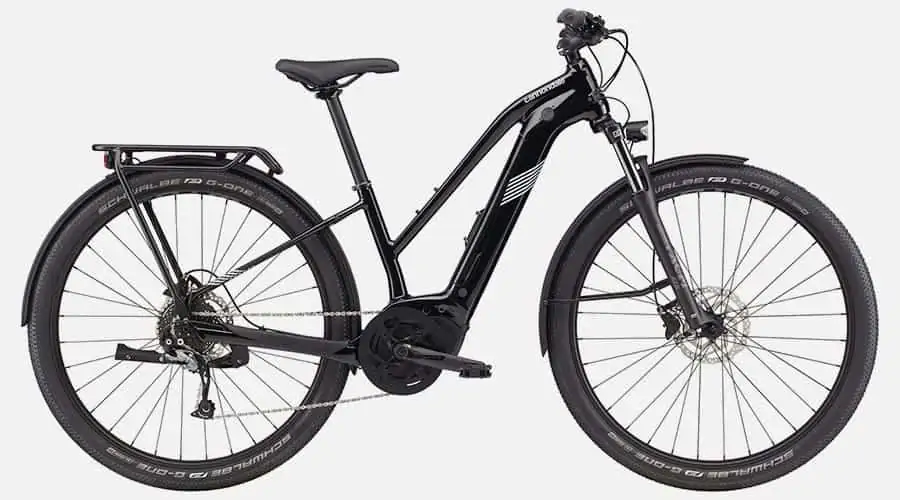
Finding an electric bike that can adapt to any weather condition without needing serious upgrades isn’t easy. They’re either powerful enough to knife through heaps of snow but not designed for riding in loose conditions or suited to various terrain types but not packed with enough power to overcome strong headwinds.
Not the Cannondale Tesoro Neo X 3 Remixte. This bike comes equipped with a 250W Bosch Performance Line mid-drive motor. Powering the motor is a 36V 13.4Ah detachable lithium-ion battery (protecting such batteries from extreme cold is easier because they can be dismounted from the bike’s frame and stored at room temperature).
The e-bike’s electrical components are protected against water splashes from any direction. This means it can handle light rain and sprays from puddles. However, we don’t recommend washing the bicycle with a pressurized nozzle or submerging some of its electronic components (especially the motor, since it is located at the bottom of the bike) in large amounts of water.
Pros
- It is an all-around all-weather electric bicycle. You probably won’t need to winterize this e-bike during cold season. That’ll save you the trouble (and cost) of having to upgrade the bike to prepare for riding in wintertime.
- It is a lightweight high-performance electric bike.
The Cannondale Tesoro Neo X 3 Remixte weighs just 51 pounds (23 kg) making it the lightest e-bike on this list.
Cons
- The bike does not have a throttle-assist function. The only way to engage the Cannondale Tesoro Neo X 3 Remixte’s mid-drive motor is by pedaling.

Main Features:
- Riders Weight Limit | 200 lbs (91 kg)
- Motor | 250W Bosch Performance Line
- Range | 60 Miles
- Battery | 36V 13.4Ah Detachable Lithium-ion Battery
- Speed | 20 mph
- Waterproof Ratings | IPX4
Ebike Waterproofing Guide
Knowing how to maintain your e-bike during the varying weather conditions can greatly help extend its longevity.
To help you with that, we’ve compiled a definitive Ebike Waterproofing guide outlining how to take care of your e-bike during the different weather conditions.
How Do You Waterproof an E-bike?
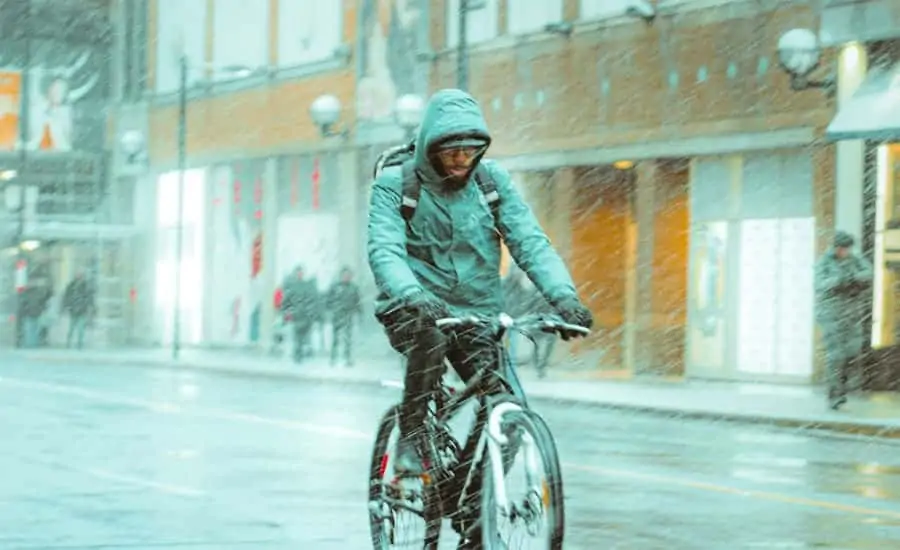
No e-bike is completely waterproof (even if they claim to be), and if you’re looking for a bike you can submerge in water, it’s best if you choose a traditional bike.
Like electronics, many of the e-bikes simply fall into the water-resistant category.
It means you shouldn’t worry about your e-bike getting into contact with the light showers or even water splashes, but you should be wory of heavy rain, or even puddles. Fortunately, it’s possible to reinforce the waterproofness of your e-bike.
Most of these processes are simply DIY measures that strengthen your e-bike’s resistance to water. So, which are these processes? First, we need to see the components that need protection from water ingress.
1) Waterproof the Motor
Water, unlike air, is not compressible, and when it enters the motor, it results in engine seize and can result in irreparable damages.
Now, like a car engine, it’s not entirely possible to waterproof the motor because, in one way or another, the connection wires will allow water to wick into the otherwise sealed motor.
However, you can stop water retention in the motor by allowing water to escape through a mean of a vent as the motor heats up through its normal cycle.
2) Waterproof the Controller
You can prevent the pooling of water on the controller’s ends by mounting it in a sloping position.
This prevents water from seeping into the plates and lets water run off the back.
3) Waterproof the Wiring
The use of dielectric grease on wiring components such as connectors can help to repel moisture.
At the same time, greasing will shield the components against corrosion.
Also Related:
Pedal Assist vs Throttle – Which One Should You Choose?
4) Waterproof the Throttle
Applying dialect grease or even hot glue on the wire ends on the throttle can help to prevent the dangerous throttle shorts.
Of course, the ultimate waterproofing strategy is to avoid water, and more so, excessive rain or even riding your bike in pools of water.
Taking precautionary measures will altogether save you from the need of having to worry about the integrity of your e-bike.
Storing Your E-bike for Winter
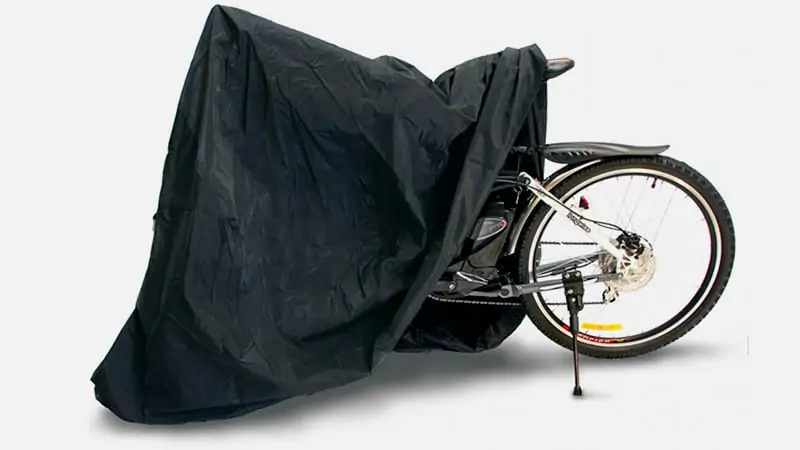
Most of the electric bikes are designed to handle winter riding. But if you choose not to prepare your bike for winter riding and would rather put it for storage from December to March, here are some of the tips on how to store your e-bike correctly.
1) Clean Your Bike Before Storage
Over time, dirt, salt, and water residue can lead to the corrosion of the metal. So, use a clean damp cloth to wipe the bike to stop this from happening.
2) Lubrication of the Chain
In normal times, lubrication of the chain and other moving parts prevents friction. However, during winter storage, lubrication prevents the chain from “freezing up” while keeping rust and corrosion at bay.
Be careful with the process because over-lubrication easily attracts dirt and abrasive particles, leading to poor performance and component damage. As a general rule of thumb, always wipe the excess lube before storage.
Also Related:
Ebike Battery Explained – Guide & Charging Tips
3) The Battery Should Be Stored Partially Charged
Ideally, e-bike batteries should be stored with a charge of 40% to 80%. Storing the bike at 100% will reduce the battery life.
On the other hand, storing your e-bike battery flat may degrade the overall performance, and it might even not be recoverable during spring.
4) Storing your Electric Bike in a Dry Place
While most of the e-bikes are waterproof, prolonged exposure to the humid winter weather can damage the bike. Therefore, it’s always a good idea to store your e-bike under a shed.
More importantly, however, you should take off the battery and store it in a cool, dry place, preferably a little below 20°C or 68°F, if you think your garage will be too cold.
5) Inflate the Tires
If you’re planning to store your bike on the ground as opposed to having it suspended from the ceiling, you’ll need to inflate the tires.
If your tires are flat, then the bike’s weight presses down through the rims on the rubber and is likely to deteriorate the tires over time.
How To Keep E-Bike Battery Warm In Winter
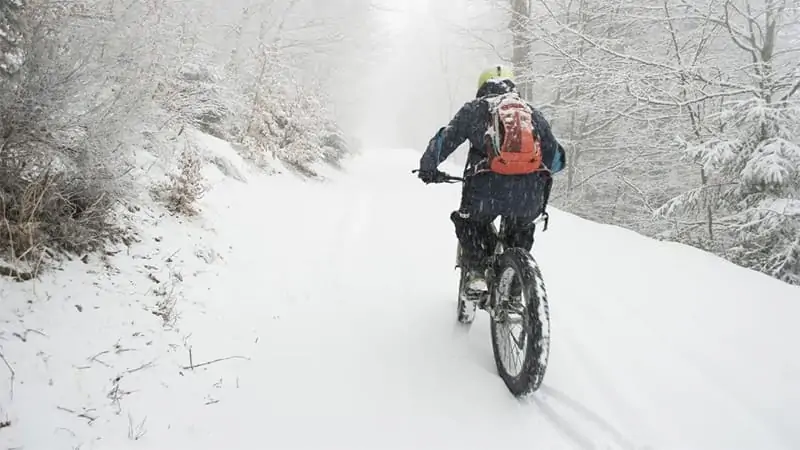
The battery is by far the most sensitive element of your electric bike. It requires special care, especially when faced with cold and below-freezing temperatures.
Here are some of the essential tips that will keep your battery warm during winter:
- Avoid leaving your e-bike’s battery out in the cold: When lithium-ion batteries are left out in the cold for long, usually below 5-10 degrees Celsius (41 to 50 Fahrenheit), they become less efficient.
- Consider a battery warmer: A battery warmer keeps your e-bike battery insulated throughout the cold weather. Along with keeping your battery warm during the cold weather, it can even help extend your battery’s life.
Also Related:
Best Long Range Electric Bikes: These 3 Will Take You Further
E-Bike Battery Insulator
Riding on lower temperatures decreases the range and overall performance of your e-bike, because of the increased electric resistance.
That said, many brands are privy of this, and a reason why most of the e-bike batteries are encapsulated in a metal/plastic shield.
However, when the temperatures are at freezing conditions, the metal shield isn’t enough to protect the batteries from the cold weather, and this is why you need an e-bike battery insulator.
Most of the e-bike battery insulators are made from a thin fabric that keeps the battery even in the freezing temperatures.
Of course, the insulators’ efficacy will depend on the number of layers, heat rating, material, and so much more.
However, the general advice is to store your battery at room temperature and only install the insulator just when you’re about to go for a ride.
Can You Leave An Electric Bike Outside?
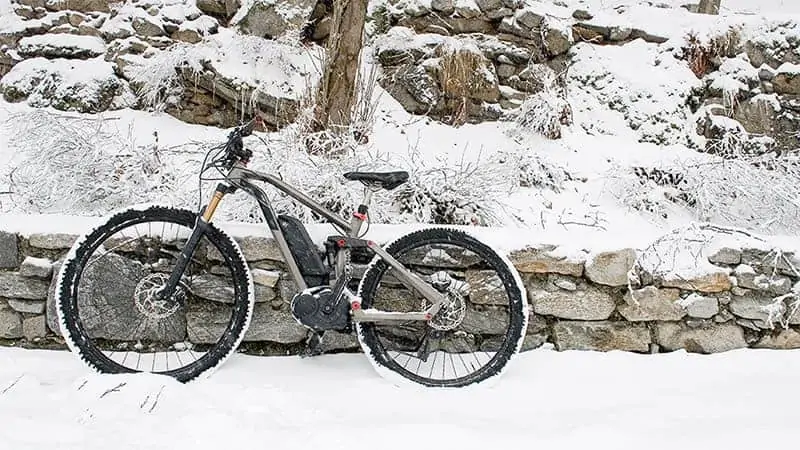
Yes, you can safely leave your e-bike on the outdoors, provided you protect it against rain and snow.
However, we don’t recommend leaving your e-bike outside for a prolonged time because eventually, the elements will start to wear your e-bike components.
Nonetheless, if you have to leave your e-bike on the outdoors, you should detach the battery and store it at room temperature.
Remember, the battery is the most sensitive component on your e-bike, and it easily loses its efficiency when exposed to extreme temperatures.
At the same time, you should also consider spraying an anti-rust sealant on your e-bike to prevent moisture and rust.
Also, if possible, find an e-bike cover to shield your bike from elements such as sunlight, or dust, which might degrade your e-bike overtime.
electric bike cover options out there in the market
There are many options in the market ranging form covers that protect against dust, weather elements, rain …etc.
You can check the full list here or consider our best recommendations below
No products found.
Can You Ride an E-bike in the Rain? Is It Safe for the Rider? Will the E-bike Get Damaged?
E-bikes are water-resistant, meaning it’s perfectly fine to ride them in the rain. If anything, they’re capable of getting wet. However, e-bikes aren’t fully waterproof, so you should avoid riding them in excessive rain that runs a soak risk.
See, riding your e-bike on light rain showers isn’t typically going to ruin your bike, but when you ride in heavy rains, enough to soak you, or even submerge your e-bike in a pool of water, it becomes a whole different story.
Another situation you should completely avoid is riding your e-bike through a deep puddle or stream.
While it might sound fun to tempt the water, it doesn’t seem like such a good idea because it’s likely to damage your equipment.
Also Related:
How to Improve Your E-Bike Skills and Techniques? The Ultimate Guide



